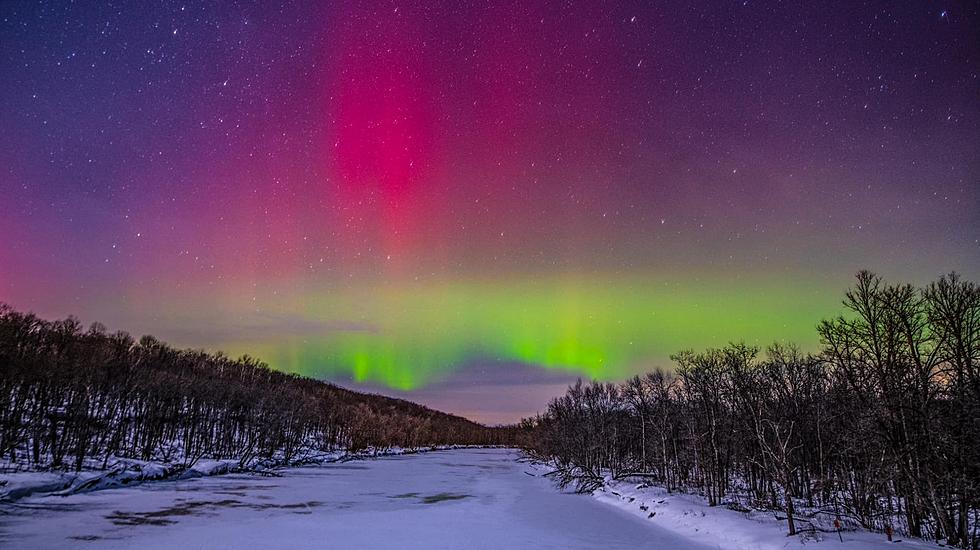
When Might the Northern Lights Be Visible Again? Use This Online Tool
Credit: Jeff Schad, That's So Minnesota
Northern lights in Askov, Minnesota
There is nothing more magical than spying the Northern Lights, the Aurora Borealis, which can be spectacular on a clear, moonless night in the Northland. Conditions have been ideal since last weekend, with a significant geomagnetic storm on the sun resulting in shimmering waves of green and red in the northern sky. One of my favorite shots is above, courtesy of Jeff Schad in Askov, Minnesota, featured in KARE-11's "That's So Minnesota" Facebook Group. Spectacular!
According to NOAA's Space Weather Prediction Center: "The Aurora Borealis (Northern Lights) and Aurora Australis (Southern Lights) are the result of electrons colliding with the upper reaches of Earth’s atmosphere. " These vibrating, "excited electrons" collide with oxygen and nitrogen atoms, releasing energy in the form of light (much like how neon works), only this light show is 50-300 miles above the surface of the Earth.

I have seen the Northern Lights a couple of times at our Minnesota cabin up north and it can be an unforgettable sight. The Geophysical Institute at the University of Alaska, Fairbanks has shown considerable skill in predicting the Aurora Borealis days in advance. Check out the latest forecast here. Weather-permitting, conditions may remain favorable for seeing the Northern Lights much of this week. In the end it's a crap-shoot. The best thing you can do is be spontaneous: head into your backyard, wait for your eyes to adjust to the darkness, and look off the north. Save this link - it's the only (reliable) resource I've found that offers some skill in predicting when you may be able to see aurora.
In this case red = high potential to see the aurora, if the weather cooperates, which is always a big if. According to the Geophysical Institute, "the Kp number is a system of measuring aurora strength. The range goes from 0 to 9 (0 being calm, 1 very weak, all the way up to 9, which would represent a major geomagnetic storm with strong auroras visible). Anything Kp 5 and above is classified as a geomagnetic storm."
KARE-11 in the Twin Cities has a post up with more amazing examples of aurora photos in recent days - it's worth a look.
Seeing the Northern Lights can be a rare oh-wow moment, something you never forget. With assorted storms and thawing temperatures sparking patchy clouds, viewing conditions may not be optimal in the days to come. As always - your results may vary.
But it's worth a shot. You might just get lucky!




